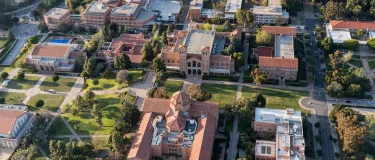A comprehensive, five-year study to understand the health consequences of the nation’s largest uncontrolled release from a single underground gas storage facility in US history.
In November 2022, a team of UCLA researchers was awarded a $21 million grant by the Los Angeles County Department of Public Health to conduct the Aliso Canyon Disaster Health Research Study.
The purpose of the Health Study is to assess short- and long-term effects of the disaster and routine emissions on the health of communities living and working in proximity to the blowout.
It is a comprehensive assessment comprising multiple studies that together will form a full picture of the impact of exposure to the emissions on people’s health. These include studies of environmental exposures and studies of health and well-being.
For more information on the UCLA Aliso Canyon Health Study, visit alisostudy.ucla.edu.
We have brought together a team of the world’s best scientists to investigate the environmental and health impact of the facility, including physical and mental health, quality of life, and overall well-being throughout their life course...The outcomes of these studies will be exceptionally important and also at times, very complex. We will present these findings in a clear and approachable way to provide the information needed by residents, regulators, and policymakers to understand the disaster impacts and take actions when needed.
Michael Jerrett, PhDPrincipal Investigator and Exposure Core Lead, UCLA Aliso Canyon Disaster Health Research Study
Aliso Canyon at a Glance
100,000
metric tons of methane and air toxins escaped into the atmosphere from the Aliso Canyon gas well between October 2015 and February 2016
130,400+
people live within five miles downwind of the disaster site
41%
of the people who live within five miles downwind of the disaster site are under 19 years old or 65 and older




